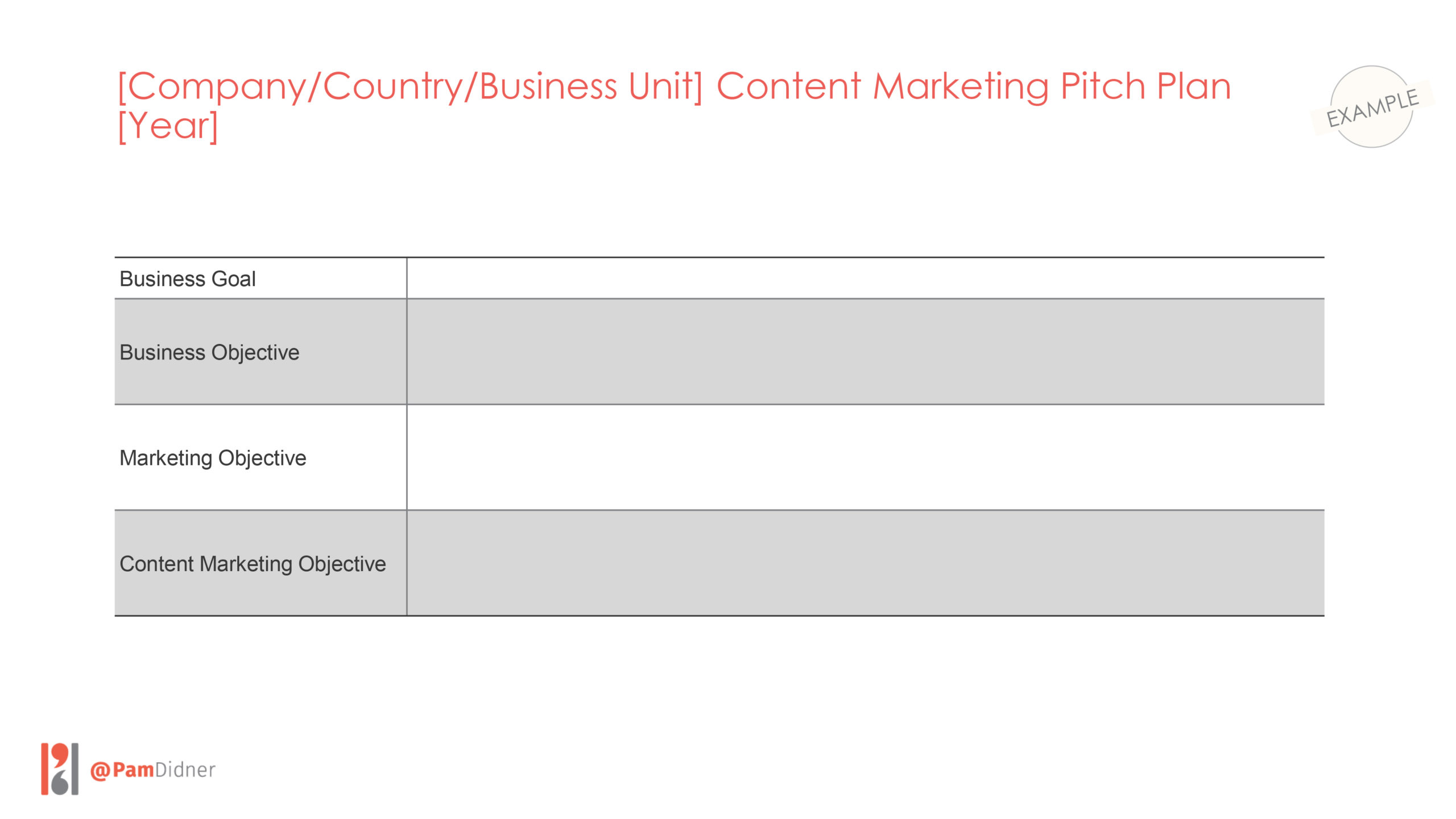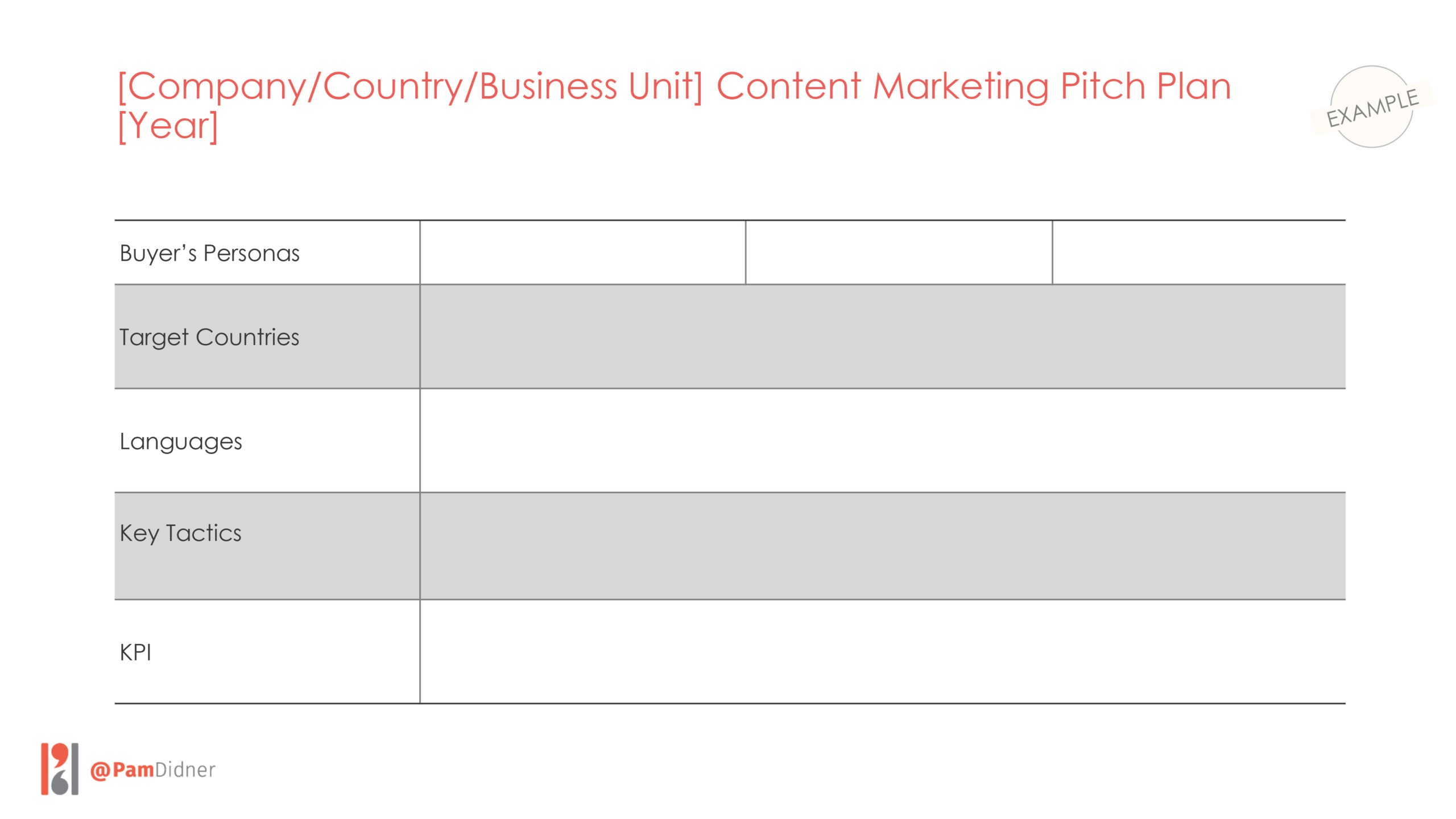
- What is content marketing?
- What are the Different Types of Content Marketing
- What are the Benefits of Content Marketing
- What is a Content Marketing Strategy
- How to Build a Content Marketing Strategy
- How Does Content Marketing Help SEO
- How to Measure Content Marketing
- How is a Content Marketing Team Structured
- How Will Content Marketing Change in 2021
- How Does Content Marketing Drive Sales
- Content Marketing Tools
- Final Words
Your content is your voice and your narrative
Social media platforms have given everyone a chance to voice their opinions and connect with others. It also lets you market your innovations and showcase your knowledge to help others.
Social media is a virtual stage. Your content is your show, your story, and your voice.
In order to use media platforms effectively, businesses need to create content to increase sales, expand brand awareness, drive demand, and enable sales.
So, what is content marketing?
The role of content marketing is to create and promote original content to reveal who you are and what you know. By doing so, you gain followers and, hopefully, monetize your content. For a business, content marketing is about creating and distributing useful and relevant content to attract and retain a clearly defined audience to grow your business. It doesn’t matter whether you are an individual creator or a business, the core elements of content marketing are:
- Plan: Strategize and Align
- Produce: Create and Design
- Promote: Syndicate and Amplify
- Perfect: Measure and Optimize
Content marketing needs the 4 P’s in order to deliver a relevant and seamless customer experience. The 4P’s are discussed at length in my book, Global Content Marketing.
Many people focus on content production, but content promotion and measurement are equally important.
Tip: As many hours and as much money as you spend on content production, you should spend an equal amount of time and money on promotion.
The Different Types of Content Marketing
Although there are many ways to classify content, here are the categories I use:
Ownership: Original vs. 3rd party vs. User-generated content.
Original content is created by you, while 3rd party content is created by others. User-generated content can also be content from your community members or followers.
Content format: Text vs. Audio vs. Video
You can do a high-level break down of content by text-based, audio or video formats. With that format types, you can further define the content to:
- Blogs
- Podcasts
- Videos
- Infographics
- Case studies
- White papers
- eBooks
- Template and checklists
- Webinars
- Slides decks
- Courses
Some even consider apps, social media posts, email or lead magnets as different types of content marketing. Apps and email are “channels” to house content, so I don’t include them as content marketing types.
Lead magnets can be case studies, eBooks, templates or checklists. Lead magnets is just a term we use to drive conversions. It’s not a content type per se.
Are social media posts a type of content? I think it’s pushing it to say it’s a form of content. Social media posts are certainly a method of promoting your content but it’s not a content type.
However, some content types are both social media platforms and content such as Clubhouse room chats or TikTok videos. You can argue that Clubhouse is another form of podcast or audio format content. Tik Tok is just another form of video or another social media platform.
We don’t need to split hairs to define different content types, but you get the gist of it.
There is another content type that is often overlooked: interactive content. Some great examples are quizzes, polls, gamification or even AR/VR types of content that allow the audience to “engage” with your brands or offer an immersive experience you want to share.
Since there are many types of content, you need to determine which types of content you want to create. That’s a strategic discussion with your team and management.
You also need to take into account your audience’s content consumption preferences.
Then, you need to assess whether you have the right talent (in-house vs. agency) to create the content. Having a plan and understanding your audience will help you determine the types of content you should prioritize.
The Benefits of Content Marketing
Here are the key benefits of creating content:
- Build authority: Use content to showcase your thought leadership and expertise
- Optimize for search (SEO): Leverage targeted keywords and search-driven topics to improve your organic ranking
- Increase inbound traffic: Promote your content to drive traffic to your website
- Generate leads: Create conversion-driving content to encourage prospects to contact us or try our products
- Improve conversions for sales: Sales uses content as conversation openers to engage with prospects
- Increase brand awareness: Produce content to build awareness of your brand and products
- Grow social following: Share useful content to build your own tribe
- Complement customer support: Use content to answer customer-related questions
- Control your own narrative: Original content allows you to control what you want to say
If you create the right content, it can serve multiple purposes.
For example, a long-form blog post like this one can also be a webinar presentation, several podcast episodes, short 8-10 min videos, and even Twitter threats and question-format LinkedIn Posts.
Again, it does take time to convert one format of content to other formats. There is no one-size-fits-all approach.
What is a Content Marketing Strategy?
Content marketing strategy is your plan to explain what you will do, when, to whom, where, how and how much. It’s an internal document to communicate with your executives, internal stakeholders, and team members how to support the company’s business objectives and goals.
Therefore, when you create your strategy, you need to be able to answer their questions.
A strategy deck is not about what you want to say. It’s about saying it in a way that your management and internal stakeholders can understand.
How to Build a Content Marketing Strategy
Every company’s content marketing plan is different. In general, your plan should address some or all of the following questions:
- What do you want to accomplish with the marketing plan?
- Who is the audience of the marketing plan? (A marketing plan is an internal document to align internal teams. The audience should be your internal stakeholders.)
- What are their concerns related to content marketing?
The above questions can be boiled down to 11 questions: 9Ws and 2Hs. Use them to structure and flow your plan logically.
- Why do we need a content marketing plan?
- What do we want to accomplish with content marketing?
- Who is our audience?
- How do we measure our success?
- How much money is required?
- What strategy and key tactics are needed to accomplish our business goals?
- Which countries and languages are our priority? Where is our business focus?
- Who should do what on editorial planning and content creation?
- What is our messaging?
- What challenges will we encounter in implementing content marketing?
- What should be done, when and by whom?
I created a blog post on how to create a scalable global content marketing plan. The elements in that blog post still apply here to build a content marketing plan
Marketing two-pager
The first 7 questions above can easily be summarized into a marketing two-pager. I talked about a marketing objective two-pager extensively in this blog post: Important Templates You Need To Update Your Marketing Plan AGAIN Post Covid-19.
I am a strong believer that every marketing plan should start with a summary page that provides a quick peek at your overall marketing plan.
In your plan, you need to articulate how business objectives tie to marketing objectives and how marketing objectives tie to your content marketing objectives.
If your internal stakeholders agree with you on your two-pagers, they agree with you on:
- Marketing objectives
- Content Marketing objectives
- Content Marketing strategy
- Target personas
- Language and country priority
- Key Content Marketing tactics
- KPIs
On top of that, you show your stakeholders and management that you can think strategically and help them connect all the dots with ease.
Here are two-pager templates you can use. My clients use these two pages as the cover of their marketing plans. Many of them modify my templates and add or delete elements as they see fit, and you should too.
Buyer personas:
In your content marketing plan, you need to clearly communicate for whom you create content. Your personas should align with corporate or business units’ personas. If you decide to create content for different sets of customers, you need to explain why.
You also need to explain any decision not to support specific corporate or business units’ customers.
Tip: You can’t support all your company’s personas. Prioritize, then communicate clearly with your management. There needs to be some give and take among you, business units, and management.
Messaging and value propositions:
In some cases, the plan should also include your messaging framework and editorial planning. A messaging framework is a logical and structured representation of your products’ and services’ unique promises and differentiation.
I created an in-depth blog post to discuss how to create a solid messaging framework.
It’s nice to share the talking points of your key products as part of the content marketing plan so your management knows what you will communicate with the content you create.
Editorial Plan and Content Roadmap:
It’s also great to include a slide about the list of content that you plan to produce over the year or the next several quarters.
Part of the editorial calendar should also include product launches that you will support. It helps management and peers get a sense of what you will do to support major launches.
Your content is likely to be product and technology-driven because it’s easy to get subject matter experts to contribute content based on their product and technical expertise.
If your budget allows, you can also include any 3rd party content that you’ll commission as part of your overall plan. These types of content help to establish thought-leadership for your brand.
Tip: You don’t need to show “all” the content you’d produce. Focus on the content that will 1) generate the most downloads, most views 2) have the highest budget amounts or 3) hero content.
Content by country and language priority:
The cost of translation and localization of content tends to be overlooked by companys’ content teams. Therefore, it’s important that your plan communicates clearly the countries and languages that the team will cover and the content pieces that will be translated and customized.
Translation and customization are largely a budget and ownership discussion. In some companies, the translation budget is managed at the corporate level. In some cases, the local team sets aside money for translation. Make it clear who is doing what between the corporate and local teams.
Here is the blog post I wrote about localization and translation: Globalization through localization.
Key Initiatives:
This section addresses #10 and #11 from the 11 questions above:
- What challenges do we encounter in implementing content marketing?
- What should be done, when and by whom?
You can create one slide to summarize some of the key initiatives you want internal stakeholders or senior management to know about.
I’d select initiatives that are big enough to impact multiple divisions, several local teams, or are related to big budget items that have been approved as part of annual planning.
Here are some examples: marketing automation and CRM integration, content management library in different countries, translation using machine-learning etc.
Budget and KPI:
Many marketers choose not to share the budget as part of their marketing plans. For content marketing, I’d suggest that you show how much it costs for different types of content, even translation and localization based on your editorial planning.
KPIs are a critical part of any marketing plan. If it’s at all possible, please tie select KPIs to sales even though I understand that’s hard to do if your content marketing focuses on outbound efforts or the top of the purchase funnel.
The easiest way to track content performance is to incorporate clear calls-to-action to your content, such as ‘contact sales’ or ‘request a demo’. Any content you create to boost interest in talking to sales is a major plus in management’s eye.
Tip: make sure that you have 1-2 KPIs which shows your contribution to MQLs (Marketing Qualified Leads) or SALs (Sales Accepted Leads) or other indicators you can use to show your contribution to sales.
How Does Content Marketing Help SEO
Content is the core of SEO. Google loves content. Your content is how Google decides which website or articles to serve up when customers search.
So, if the content is done right, it would help the organic rank of your website’s SEO.
I am not here to discuss different magic and tricks to boost your SEO. You can find all sorts of SEO tips on the Internet. At a minimal level, you need to be cognizant of key words search, page or website domain authority, shares and backlinks of your content.
Bear in mind, it’s not about beating the Google algorithm. While you need to be mindful of SEO tips and tricks, at the end of the day, it’s about how relevant and useful your content is to your target audience, and how often you publish and refresh your content on your website.
How to Measure Content Marketing
I mentioned KPIs in the “How to Build a Content Marketing Strategy” section above.
The most immediate measurement is the number of downloads or number of views, but these numbers don’t mean much to senior management.
Content can’t stand alone. It’s a function of your marketing channels. For example, a blog post is a blog post, you can’t measure a blog post all by itself.
However, if that blog post is a part of an email marketing campaign, you can see the number of clicks and downloads, If it’s included in social media posts, you can see the number of likes and shares, but these are still vanity metrics or top-of-the-funnel.
Tie the content to specific calls-to-action, such as subscribe, contact sales, free demo or free trial. Show content’s contribution through these solid calls-to-action.
To be able to really measure content’s impact, you need to have the back-end connected and track the lead’s engagement from marketing automation to CRM.
How is a Content Marketing Team Structured
Each company does it differently. It also depends on your team’s mix of in-sourced talent and out-sourced agencies. I talked about the benefits of in-sourced vs. out-sourced in this YouTube video:
Depending on the types of content you create, you need an editor, writer, copywriter, designer, a social media manager (this may be in a different group), and subject matter experts (they may reside in business units), or video producer and editor.
I’d recommend that you create your team based on your content marketing plan. Not everyone needs to report directly to you, some can be dotted-line, some can be just resources that you can tap into, such as subject matter experts or data analysts.
Propose your organization structure recommendation and have a discussion with your manager or senior management.
There is no one standard answer on how to structure a content team.
How Will Content Marketing Change in 2021
There are always some shining stars on the horizon. For 2021, it’s Clubhouse and TikTok.
Some believe that Clubhouse will take over podcasts. It’s wonderful to join in a conversation or listen to others talking about any topics in any rooms.
Should you do Clubhouse? Again, you need to understand your objective and goal before you try new platforms. If you decide to open a room in Clubhouse and have a regular discussion, do you have resources to support it? Can you sustain it? How do you measure your success?
That also applies to TikTok. It’s so popular and I love the fun content, but does it help you build your brand awareness or does it help to convert to sales?
Most importantly, does your audience go there for business-related information?
Have a plan before you chase a shining star. Even if you don’t have a plan and you want to do an organic pilot, you still need to know what you want to accomplish initially. That, in itself, requires planning.
How Does Content Marketing Drive Sales
There are many ways content marketing can be utilized to drive sales.
- Create bottom-of-the-funnel or sales-centric content for the sales team
Create specific content for your sales team, such as solution briefs, pricing sheets, feature comparison guides, and case studies. Talk to sales and understand their needs.
- Map marketing content to sales stages
I am a strong advocate of sharing marketing content with sales teams. However, not all marketing content is ideal for sales’ usage. The best way is to select and map content to the sales stage.
Here is a blog post to explain how you can do that: How to Better Support Sales with Marketing Content.
- Add conversion-driven or sales-centric CTAs as part of your content or on your website
Depending on the titles of your content and your writing, it’s OK to have crisp and strong CTAs to tell your audience what to do. Don’t hesitate to remind them to try your products or contact sales for demos.
Content Marketing Tools
If you check on G2, a peer-to-peer review site, you can see many content marketing tools out there. And many tools have a wide array of features that you can use for content creation, content promotion, content library management or even content analytics, it’s overwhelming.
The key is to understand your content production or syndication processes and understand the gaps, then source the tools to help you.
Tools to help you write better:
Grammarly: This is a fantastic tool that allows you to check your grammar and avoid obvious spelling errors.
Airstory: The drag-and-drop app allows you to gather your research materials, reorganize your materials, then write.
Hemingway Editor: It’s an editing tool to measure the readability of your content.
Cliché Finder: Well, like the name of the tool itself, it helps you find clichés and make your content tighter and more original.
Google Docs: Well, no explanation is needed.
Most Dangerous Writing App: Ok, you are seeing correctly. If you pause too long between sentences, you risk losing the entire draft. It forces you to keep writing from 3 minutes to 60 minutes.
Tools to optimize your blog posts:
MarketMuse: Uses AI to help you optimize your blog posts
Ahrefs, Moz, SemRush: SEO tools help you understand and optimize your content
Tools to manage content production, syndication and planning:
Widen Collective: Content management library to store all your content and distribute them anywhere. It also has automated workflows to guide the creation, review, approval and distribution process.
Monday.com: A suite of office operation tools to manage every aspect of business, including sales, marketing, creative, design, and more.
Co Schedule: Not just a calendaring tool, but it also provides a marketing suite to coordinate your team’s projects and processes
Feel free to check on G2 and Capterra to find various software platforms that may fit your needs.
In summary…
Content marketing, in the digital world, is complicated and messy. In the past, you could create a blog post and call it done. Now, when a blog post is created, you need to promote it on different social media channels. You also need to repurpose the content to different formats and your copy for social media channels may need to be different as well.
In addition to the quality of content, you also need to focus on processes and platforms. There are many aspects of content marketing. What you do will depend on your job scope and objectives.
As you focus on your key tasks, it’s important to have a comprehensive view of content marketing from the 4 P’s aspect: planning, production, promotion, and perfection (measurements).
If you have questions about content marketing strategy or building a global content marketing, feel free to book a call with me.








